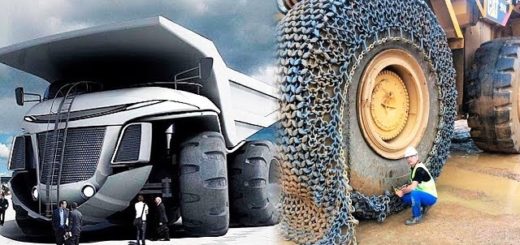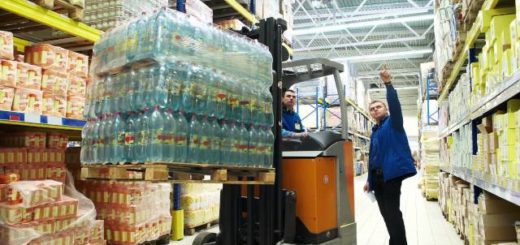What Jobs Could Robots Be Taking in Supply Chain?
Unlock the Potential of Automation: Let Robots Take the Lead in Supply Chain!
Robots are increasingly being used in the supply chain industry to automate processes and increase efficiency. This is leading to a shift in the types of jobs that are available in the industry, as robots are taking on more and more roles. In this article, we will explore the types of jobs that robots could be taking in the supply chain, and how this could affect the industry in the future.
How Automation is Changing the Supply Chain Industry
Automation is revolutionizing the supply chain industry, transforming the way goods are produced, stored, and delivered. Automation is the use of technology to automate processes, such as the use of robots, software, and other technologies to reduce the need for manual labor. Automation is changing the supply chain industry in a number of ways, from increasing efficiency and accuracy to reducing costs and improving customer service.
One of the most significant changes automation is bringing to the supply chain industry is increased efficiency. Automation can help streamline processes, reducing the amount of time and effort required to complete tasks. Automation can also help reduce errors, as automated systems are more accurate than manual processes. This increased efficiency can help companies reduce costs and improve customer service.
Automation is also helping to reduce costs in the supply chain industry. Automation can help reduce labor costs, as robots and other automated systems can do the work of multiple people. Automation can also help reduce the cost of materials, as automated systems can help identify and eliminate waste. Automation can also help reduce the cost of storage, as automated systems can help optimize inventory levels.
Finally, automation is helping to improve customer service in the supply chain industry. Automation can help reduce delivery times, as automated systems can help identify the most efficient routes and delivery methods. Automation can also help improve customer service by providing customers with real-time updates on their orders. Automation can also help reduce customer wait times, as automated systems can help streamline customer service processes.
Overall, automation is transforming the supply chain industry, bringing increased efficiency, reduced costs, and improved customer service. Automation is helping to make the supply chain industry more efficient, cost-effective, and customer-focused. As automation continues to evolve, it will continue to revolutionize the supply chain industry.
The Benefits of Automation in Supply Chain Management
Automation in supply chain management is becoming increasingly important as businesses strive to remain competitive in a global market. Automation can help streamline processes, reduce costs, and improve customer service. Here are some of the key benefits of automation in supply chain management.
1. Increased Efficiency: Automation can help streamline processes and reduce manual labor, resulting in increased efficiency. Automation can also help reduce errors and improve accuracy, resulting in fewer delays and improved customer service.
2. Cost Savings: Automation can help reduce costs associated with manual labor, such as wages, benefits, and training. Automation can also help reduce costs associated with inventory management, such as storage and transportation.
3. Improved Visibility: Automation can help improve visibility into the supply chain, allowing businesses to better track and manage inventory levels. This can help businesses better anticipate customer demand and adjust their supply chain accordingly.
4. Improved Customer Service: Automation can help improve customer service by reducing delays and improving accuracy. Automation can also help businesses better anticipate customer demand and adjust their supply chain accordingly.
Overall, automation in supply chain management can help businesses remain competitive in a global market. Automation can help streamline processes, reduce costs, and improve customer service. By taking advantage of the benefits of automation, businesses can remain competitive and improve their bottom line.
The Impact of Robotics on Supply Chain Efficiency
Robotics has had a significant impact on supply chain efficiency, allowing businesses to streamline their operations and reduce costs. By automating certain processes, robotics can help to reduce labor costs, increase accuracy, and improve the speed of operations.
Robotics can be used to automate the picking, packing, and sorting of products in warehouses. Automated picking systems can reduce the time it takes to pick items from shelves, while automated packing systems can reduce the time it takes to package items for shipment. Automated sorting systems can also help to reduce the time it takes to sort items into the correct categories.
Robotics can also be used to automate the transportation of goods. Automated guided vehicles (AGVs) can be used to move goods from one location to another, reducing the need for manual labor. Automated conveyor systems can also be used to move goods from one point to another, reducing the need for manual labor and increasing the speed of operations.
Robotics can also be used to automate the inspection of goods. Automated inspection systems can be used to detect defects in products, reducing the need for manual labor and increasing the accuracy of inspections. Automated quality control systems can also be used to ensure that products meet quality standards, reducing the need for manual labor and increasing the accuracy of inspections.
Finally, robotics can be used to automate the tracking of goods. Automated tracking systems can be used to monitor the location of goods, reducing the need for manual labor and increasing the accuracy of tracking.
In summary, robotics has had a significant impact on supply chain efficiency, allowing businesses to streamline their operations and reduce costs. By automating certain processes, robotics can help to reduce labor costs, increase accuracy, and improve the speed of operations.
The Challenges of Integrating Robotics into Supply Chain Management
The integration of robotics into supply chain management is a rapidly growing trend in the industry. As the technology continues to evolve, it is becoming increasingly important for companies to understand the challenges associated with this integration.
One of the primary challenges of integrating robotics into supply chain management is the cost. Robotics technology is expensive and requires a significant investment in both hardware and software. Additionally, the cost of training personnel to operate and maintain the robots can be significant. Companies must carefully consider the cost of implementing robotics into their supply chain management system before making the investment.
Another challenge of integrating robotics into supply chain management is the complexity of the technology. Robotics technology is highly complex and requires a great deal of expertise to operate and maintain. Companies must ensure that they have the necessary personnel and resources to properly manage the robots. Additionally, the robots must be programmed to perform specific tasks, which can be a time-consuming process.
Finally, integrating robotics into supply chain management can be difficult due to the need for compatibility with existing systems. Companies must ensure that the robots are compatible with their existing systems and processes. Additionally, the robots must be able to communicate with other systems in order to effectively manage the supply chain.
Overall, integrating robotics into supply chain management can be a complex and costly process. Companies must carefully consider the cost, complexity, and compatibility of the technology before making the investment. With the right resources and personnel, however, robotics can be a powerful tool for improving supply chain management.
The Future of Robotics in Supply Chain Management
Robotics is rapidly becoming an integral part of supply chain management. As technology advances, robots are becoming increasingly capable of performing complex tasks, such as picking and packing items, loading and unloading trucks, and sorting and transporting goods. This technology is revolutionizing the way supply chains operate, allowing for greater efficiency, accuracy, and cost savings.
Robots are already being used in warehouses and distribution centers to automate the picking and packing process. By using robots, companies can reduce labor costs and increase accuracy. Robots can also be used to automate the loading and unloading of trucks, which can reduce the amount of time it takes to move goods from one location to another. Additionally, robots can be used to sort and transport goods, which can help reduce the amount of time it takes to move goods from one location to another.
In the future, robots will become even more capable and will be able to perform more complex tasks. For example, robots may be able to identify and pick items from shelves, as well as sort and package items for shipment. Additionally, robots may be able to monitor inventory levels and alert managers when stock needs to be replenished.
Robotics is also being used to improve customer service. For example, robots can be used to answer customer inquiries, provide product information, and even process orders. This technology can help reduce customer wait times and improve customer satisfaction.
The use of robotics in supply chain management is still in its early stages, but it is clear that this technology has the potential to revolutionize the way supply chains operate. As technology continues to advance, robots will become increasingly capable of performing more complex tasks, allowing companies to reduce costs and improve efficiency. In the future, robots will become an integral part of supply chain management, allowing companies to remain competitive in an ever-changing market.
How Robotics is Transforming the Logistics Industry
Robotics is revolutionizing the logistics industry, transforming the way goods are moved and stored. By automating processes, robotics can help reduce costs, improve efficiency, and increase safety.
Robotics can be used to automate the loading and unloading of goods, reducing the need for manual labor. Automated guided vehicles (AGVs) can be used to move goods from one location to another, eliminating the need for manual transportation. Automated storage and retrieval systems (AS/RS) can be used to store and retrieve goods from warehouses, reducing the need for manual labor.
Robotics can also be used to automate the sorting and packing of goods. Automated sorting systems can be used to sort goods by size, weight, and other characteristics, reducing the need for manual sorting. Automated packing systems can be used to package goods for shipment, reducing the need for manual packing.
Robotics can also be used to automate the inspection of goods. Automated inspection systems can be used to inspect goods for defects, reducing the need for manual inspection. Automated quality control systems can be used to ensure that goods meet quality standards, reducing the need for manual quality control.
Robotics can also be used to automate the tracking of goods. Automated tracking systems can be used to track the location of goods, reducing the need for manual tracking. Automated inventory systems can be used to track the quantity of goods, reducing the need for manual inventory management.
Robotics is transforming the logistics industry, making it more efficient and cost-effective. By automating processes, robotics can help reduce costs, improve efficiency, and increase safety.
Conclusion
In conclusion, robots are becoming increasingly important in the supply chain industry. They are able to perform a variety of tasks, from picking and packing to sorting and transporting goods. They are also able to provide a more efficient and cost-effective way of managing the supply chain. As technology continues to advance, robots will become even more important in the supply chain industry, taking on more complex tasks and providing even greater efficiency.
Robot Resources
- 5 Amazing Warehouse Robots for Fulfilment and Distribution Centers.
- 12 Mindblowing AI Tools To Grow Your Business.
- A 360° tour of Ocado’s automated warehouse.
- AGV, ASRS, Warehouse Distribution Automation.
- Amazon’s Robotic Empire: Jeff Bezos’ Smart Warehouses.
- Emerging Technologies Improve Supply Chain: AI, AR, Blockchain, IoT, RPA, Robots…
- Microsoft CEO Satya Nadella: Products Will Access Open AI Tools Like ChatGPT.
- SCM Resources Organized by Topic.
- Shipping Warehouse Automation Robots.
- Supply Chain Management Key Concepts.
- Supply Chain Today: Supply Chain Research, News, and Training.
- Using Artificial Intelligence and Robotics to Automate the Supply Chain.
- What is Supply Chain Management?
- Will Robots and Artificial Intelligence replace Human jobs by 2030?










































